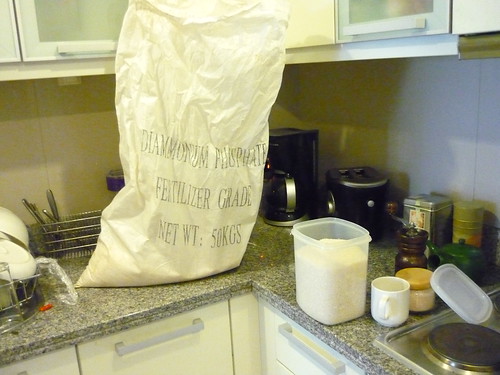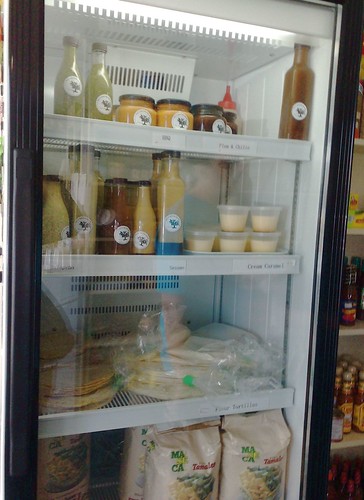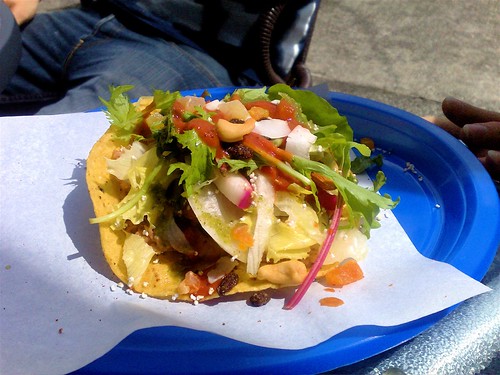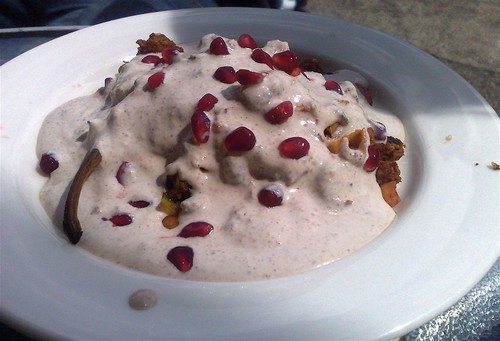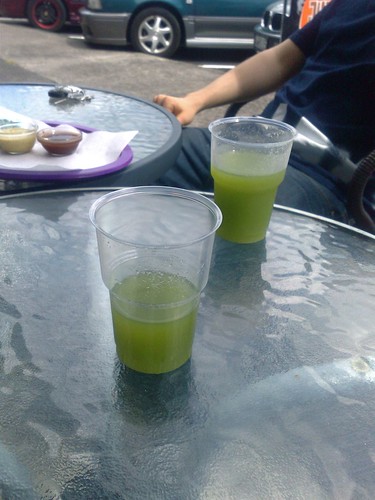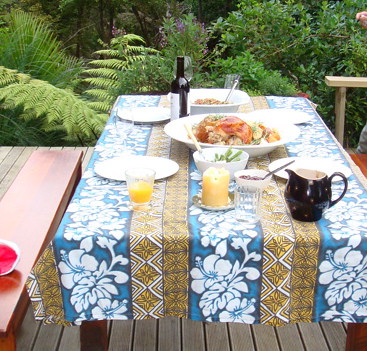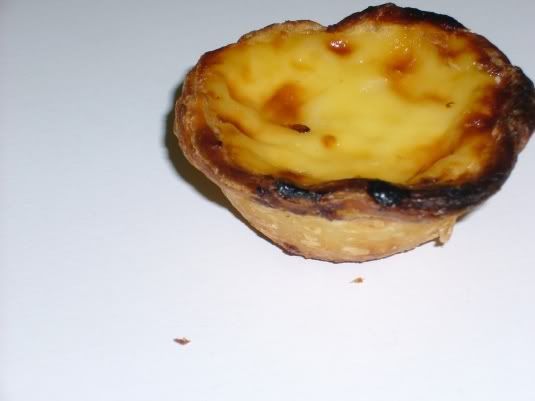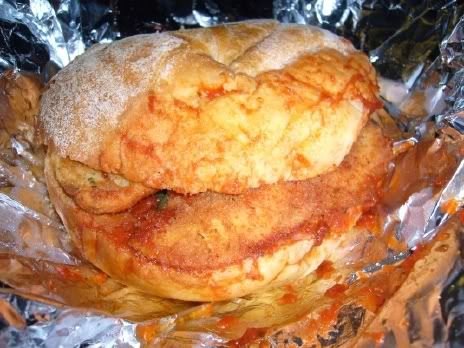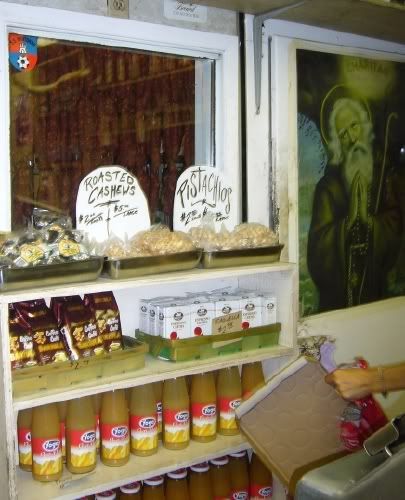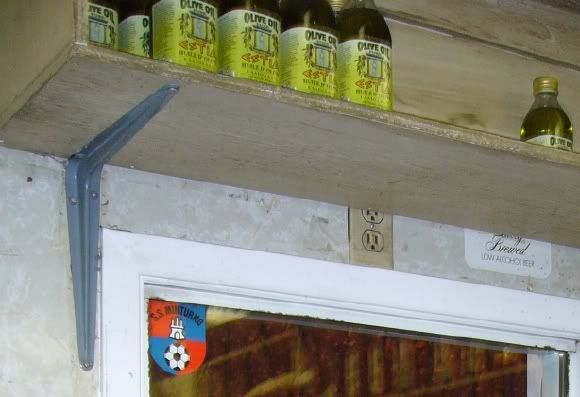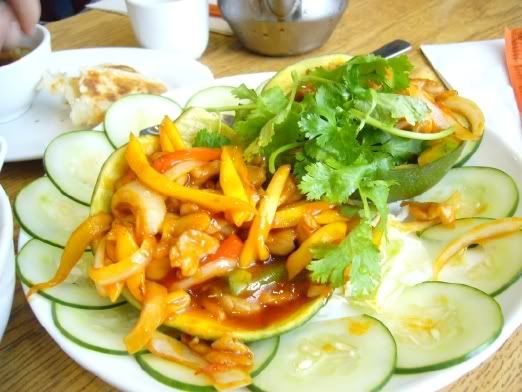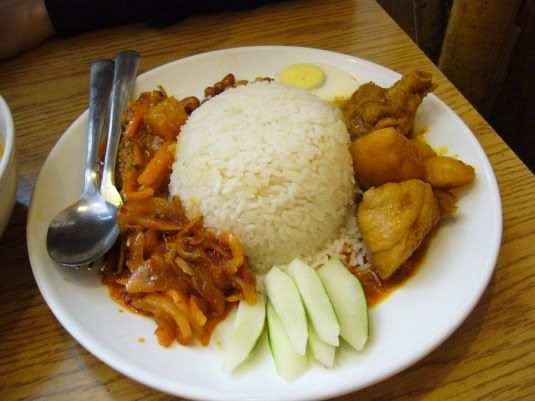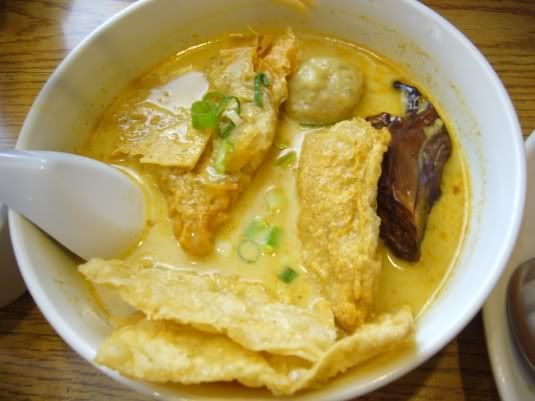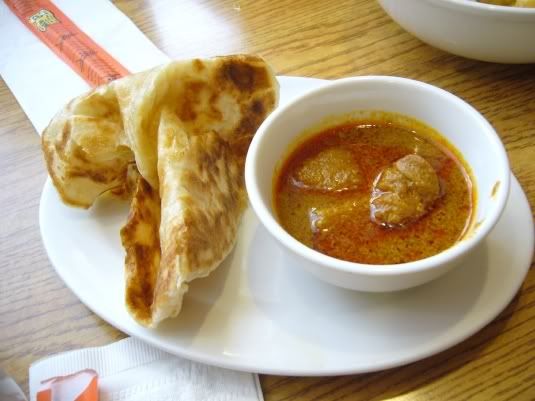I've been pondering the notion of food racism lately....
Given Brillat Savarin's quote "tell me what you eat and I will tell you who you are" it only bares to reason that food in many senses becomes symbolic of difference, similarities and cross cultural miscommunication
Michael Pollen wrote that colonisation of one country over another starts with diet.
I still think back to the stifled work lunches and dinners between foreigners and Cambodians, where foreigners would pick at the Khmer food on the plate in a way that was symptomatic of more than just a reluctance to "break bread" with their dining companions.
So I was thinking of all the racist slurs for the "other" based on food such as:
Kraut
Curry muncher
Dog eater
Limey
Twinkie
Bounty Bar
coconut
frog eater
And it occured to me to take a look at what
wiki considers to be the national dishes of various countries."A national dish is a dish, food or a drink that represents a particular country, nation or region. It is usually something that is naturally made or popular in that country.The concept is highly informal and vague, and in many, if not most cases the relationship between a given territory or people and certain typical foods is ambiguous. Typical dishes can vary from region to region, and the use of the term "national dish" does not always imply the existence of a "nation" in any legal sense...
Similarly, countries can share a national dish...National dishes also function as stereotypes. These can be either autostereotypes, describing a nation's self-image, or heterostereotypes associated with a nation in the outside world, or both. While most "national dish" stereotypes are positive to neutral, they can also acquire the status of ethnic slurs....In some cases, supposed national dishes are similar to urban legends, especially when relating to countries that are exotic from the perspective of another country. E.g., the popularity of fried spiders in Cambodia, dogs in Korea is largely overestimated in the West. Urban legend-like national dishes can also turn into a self-fulfilling prophecy, as demonstrated by the example of the Scottish deep-fried Mars bar, which is believed to have become at least moderately popular after English media circulated the story of its existence. For more on the stereotyped usage of foods and its political implications see Freedom fries."Although Wiki's politically sensitive preamble quite rightly points out the pitfalls of having a "national dish", it still goes on to stereotype countries according to their food and it still lists fried spiders next to Cambodia.
Now I know that in some parts some Cambodians have been known to eat tarantulas but I'd hardly call it a national dish...when you go to Cambodia you will not find people wandering around snacking on big hairy spiders
For New Zealand, we have pavlova, fish and chips....ok....but what the F*&k is Colonial Goose?????
I'm sure that Canadians will be disappointed to be labelled as "Kraft Dinner Eaters" as much as the Taiwanese would dispute "stinky tofu" as their national dish
The list is the most detailed for English speaking countries, but pretty thin on the ground in terms of everyone else...which makes me think how little it is that we really know about the known edible world outside of our own distinct cultures.
It's a sad but true testament to the low levels of cross-cultural understanding in the world.....it's true, my Chinese aunties seem to believe that western food is primarily steak and chips
So in order to foster a greater sense of cross cultural understanding through food....we are inviting all non-contributing team members and anyone else who wants to, to compile and post a list of "must eats" from your home town....lest we continue to think of you solely as curry munching, colonial goose eating krautsWiki's National Dish List • Argentina - locro, asado, dulce de leche, alfajor.
• Australia- Meat pie, hamburger with beetroot, Vegemite on toast, Pavlova
By state
Queensland - Moreton Bay bug
New South Wales - Balmain Bug
South Australia - Pie floater
• Austria - Sachertorte, wiener schnitzel (Vienna), apfelstrudel
• Bahrain - Machboos/Machbous, Muhammar
• Barbados - Cou-Cou and Flying fish
• Belgium - pommes frites, moules bruxellois (Brussels)
• Bhutan - ema datsi
• Brazil - Feijoada, rice and beans,pão de queijo,churrasco, coxinha, brigadeiro.
• Cambodia - ahmok, fried spider
• Canada - maple syrup, Kraft Dinner, Timbits, Pancakes.
"Cuisine is poorly defined in the national mythos, especially outside of Quebec. However, each region has a distinctive dish or in the case of Quebec, an entirely separate regional cuisine."
By Province or Region
Alberta - steak (beef or bison)
British Columbia - salmon steak, Nanaimo bar
Manitoba - Red River cereal
Newfoundland - fish and chips, flipper pie
Ontario - Pancakes
Quebec - poutine, pea soup, tourtière
• Chile - sea bass, palta (avocado), jaivas (food)
• Greater China
- The staple diets in Northern China are: mantou, bing (Chinese flatbread) and wheat noodles
- South: rice, rice noodles and rice congee.
By city/province:
Beijing - Peking duck, hot pot
Fujian - Popiah, Fotiaoqiang, Oyster omelette
Guangdong - Dim sum, slow cooked soup, Char siu, century egg
Hong Kong - egg tart, dim sum, BBQ pork with rice, wonton noodle soup, pineapple bun
Hunan - Orange chicken
Macau - Galinha à Portuguesa, baked pork chop bun
Shanghai - Xiaolongbao, ci fan tuan, red-cooked stews, Shanghai hairy crab
Sichuan - Szechuan hotpot, Kung Pao chicken, Twice Cooked Pork, Mapo doufu
• Colombia - Bandeja paisa, arepas
By Department:
Santander - Hormigas Culonas
Cundinamarca - Ajiaco
Valle - Sancocho
• Costa Rica - Gallo Pinto, Casados
• Cyprus - Halloumi
• Denmark – Pork Roast, Frikadeller, Smørrebrød
• Egypt - Ful medames, Kushari
• Ethiopia – doro wat (chicken stew) , injera
• Finland - Karelian pasties, mämmi, hernekeitto (Finnish yellow pea soup)
• France - Pot-au-feu, baguette (particularly Paris), cassoulet, truffles,
foie gras (declared part of the French cultural heritage by legislation in 2005)
By region
Alsace - Sauerkraut, tarte flambee
Bordeaux - Entrecôte with Bordelaise sauce
Brittany - Crepes
Burgundy - Coq au vin, beef bourguignon
Lorraine - Quiche lorraine
Normandy - Camembert
Provence - Bouillabaisse, salade nicoise, ratatouille
• Germany - Sauerbraten, sauerkraut, currywurst, doner kebab
• Greece - moussaka, fasolada, Greek salad
• Hungary – goulash
• Iceland - Þorramatur
• India - curry, samosas, naan, chapati, chutney, dal
By region
Andhra Pradesh - Hyderabad Biryani, aavakaaya
Goa - Pork Vindaloo, Goan fish curry
Kashmir - Rogan Josh
Kerala- Sadhya
Punjab - Tandoori chicken, aloo gobi, raita
Tamil Nadu - Masala dosa, idli, appam
• Indonesia - Satay, gado-gado, nasi goreng, rijsttafel
• Iran - Chelow kabab
• Ireland – colcannon, Irish stew
• Israel - felafel, Chicken schnitzel
• Italy - pizza, pasta, minestrone, ciabatta, polenta (northern Italy)
By region
Bologna - tortellini, tagliatelle al ragù, mortadella, lasagne, Parmigiano Reggiano
Florence - Bistecca alla Fiorentina
Genoa - foccacia
Naples - Pizza Margherita, gelato
Milan - risotto, ossobuco with gremolata
Rome - porchetta, spaghetti carbonara, Stracciatella
Sardinia - pecorino, pane carasau
Sicily - arancini, caponata, ricotta
Torino - agnolotti, grissini, Gianduiotto
Venice - scampi
• Jamaica - saltfish and ackee
• Japan - sushi, Japanese noodles, tempura, donburi, curry rice
• Jordan - Mansaf
• Korea - kimchi, bulgogi, bibimbap, naengmyeon
• Laos - larb
• Lebanon - Kibbe, Tabbouleh
• Malaysia - nasi lemak, roti canai, char kway teow, satay, assam laksa
• Mexico - pozole, taco, mole, guacamole
• Morocco - couscous, tagine, pastilla, harira
• Myanmar - mohinga
• New Zealand – pavlova, fish and chips, Colonial Goose
• the Netherlands - stamppot, hutspot
• Nicaragua - Gallopinto
• Nigeria - Jolof rice
• Norway – lutefisk, fårikål, kjøttkaker
• Pakistan - Nihari
• Palestine - Musakhan
• Peru - ceviche, quinoa, maize
• Philippines - adobo, lumpia, sinigang, bistek, bangus
• Poland - bigos, barszcz, pierogi
• Portugal - Bacalhau, Feijoada, Pastel de Nata
• Romania - Mamaliga, Mititei, Cozonac, Fasole cu carnati
• Moldova – Grape-leaf Sarmale, Fermented wheat bran Borscht
• Russia – borscht
• Saint Kitts and Nevis - Coconut dumplings, Spicy plantain, saltfish, breadfruit
• Saint Lucia - green figs & saltfish
• Senegal - tiebou dieun
• Singapore - Hainanese chicken rice, curry laksa, chilli crab
• Slovakia - Bryndzové halušky
• Spain - cocido, tapas, paella, chocolate con churros
• Sri Lanka - rice and curry
• Sweden - pea soup, smörgåsbord, köttbullar, sill & surströmming
• Switzerland – rösti, fondue
• Taiwan - Suncake, Stinky tofu, Ba wan, Beef noodle soup
• Tanzania - ugali
• Zanzibar - octopus curry
• Thailand - Pad Thai, gaeng (Thai curry), jasmine rice, tom yam, tom kha gai
• Tunisia - Couscous, brik
• Turkey - döner kebab, pide, köfte, dolma, pilav
• Ukraine - pierogi
• United Kingdom
England – roast beef dinner, fish and chips, chicken tikka masala, English breakfast
Wales – laverbread, Welsh rarebit, Cawl
Scotland – haggis, deep-fried Mars bar
Northern Ireland – Ulster fry
Jersey – Jersey Royal potatoes
Isle of Man - kipper
• United States - apple pie, turkey and pumpkin pie (as part of Thanksgiving dinner), hamburger, hot dog, donut
New England - New England clam chowder, New England clam bake
The South - grits, corn bread, country fried steak, fried chicken, gumbo, barbecue
By state: See List of U.S. state foods for more
California - sourdough bread, hamburgers, fish taco
Hawaii - lau lau, Spam, poi, kalua pig
Illinois - Chicago-style deep dish pizza, Chicago hot dog
Louisiana - jambalaya, Gumbo, Crawfish, po'boy
Maine - lobster
Michigan - coney dog, Pasty
New York - buffalo wings, Manhattan clam chowder, pizza
Pennsylvania - Philly cheesesteak, hoagie
South Dakota - fry bread
Texas - chili con carne
• Uruguay - Chivito, asado
• Venezuela - pabellón criollo, hallaca, arepas
• Vietnam - bánh mì, phở
• Yemen - saltah
